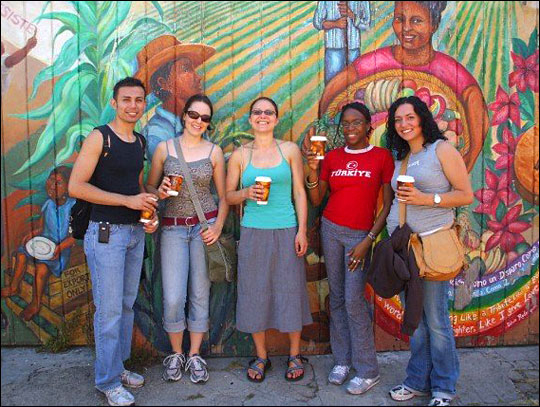It doesn’t take long to gauge the depths of Morgan Simon’s passion: you can hear it in her voice. Or what’s left of her voice, anyway. The first time I spoke with the activist, she apologized for being hoarse — a recent presentation at Grinnell College had taken its toll, she explained. But the next two times I caught up with her, the hoarseness was still there. It turns out Simon spends much of her time traveling the U.S., explaining to college students, administrators, trustees, and donors the value of socially responsible investing — and if she has to talk herself to the bone to get the message across, so be it.

Simon is the head of the Responsible Endowments Coalition, a group she helped form in 2004, the year she graduated from college. The organization saw its first official funding earlier this year, and now, with the help of two other staffers, five paid student organizers, and a gaggle of eager students, alums, and faculty members across the country, it’s slowly changing the way schools both big and small do business.
REC’s goal, in short: to convince schools to create policies that dictate socially and environmentally responsible ways to invest their money. In other words, to put their money where their mouths have long been.
It’s not exactly the type of student protest that makes headlines. But so far, REC has worked with 50 campuses to institute or strengthen such policies, from tiny schools like Maine’s College of the Atlantic to pursestring-pullers like Princeton. As a result, some of the country’s most powerful institutions are investing in things like renewable energy and community housing instead of oil fields and dictatorships.
Colleges are mission-driven institutions, Simon points out, “but when you look at where they’re investing their money, it tells a very different story.” All told, American colleges and universities control $340 billion in capital; REC’s 50-campus reach equates to about $150 billion in invested assets.
Earlier this fall, at an informal talk at the Massachusetts Institute of Technology, Simon explained the group’s purpose to a small but attentive crowd: “We’re bringing some humanity back to capitalism,” she said. “This isn’t very radical, it’s not about to start the revolution, but it can help save some lives.”

With a broad progressive agenda, REC provides materials and advice to students interested in issues ranging from rainforest destruction to genocide in Darfur to, well, plain ol’ economics. As a result, it attracts attention from campus groups whose interests haven’t traditionally overlapped — say, a sustainability club and an investment club. The coalition provides mentoring, publications and sample documents, conferences, and advice to all comers.
And REC’s support gets students thinking big: “We’re at a point where students realize, I can [get my school to offer] fair-trade coffee in the cafeteria … but the next leap in terms of impact is not $10,000 worth of coffee in the cafeteria, it’s $10 billion in investments,” says Simon. “We have activists thinking strategically about how money works in the world, and not being afraid of it.”
Students are finding REC’s support crucial. “This is hard for us,” said one of two student organizers who spearheaded the MIT event; they had spent the summer meeting with administrators to try to convince the school to create a committee on investor responsibility. “We don’t know this stuff. I’m a biologist, he’s a mathematician — it’s not our field. But it can be our legacy that we leave that there’s some sort of structural change.”
His comment raises a natural question about REC’s work: what happens when the passionate students graduate and move on to other things? That’s why the goal is systemic change — but that can be hard to accomplish. “I’m worried that administrators are treading water,” said one self-described philanthropist who sat in on the MIT presentation. “They’ll listen and say what is it this time, and maybe they’ll do it … if 500 student groups march in, not two students, then yes, we’re getting somewhere.”
But there’s a ways to go before that happens. As the MIT crowd trickled out, one student stayed behind to speak with the two who had organized the meeting. Though the room was taking on the cavernous character of any empty lecture hall, their energy ballooned as they compared ideas, goals, frustrations, and hopes. “This is awesome — we’ve been dying,” said one of the two organizers, clearly relieved to have a third comrade.
For now, that’s an important way REC is getting its work done: one passionate student, alum, administrator, or donor at a time. “I’d much rather talk to a group of 20 people who can make connections than a group of 100 who leave and go back to their dorms and say, ‘Let’s watch a movie,'” said Simon a few days later, when I caught her on the phone. In the same conversation, she told me she had 36 hours to get her voice back before her next appearance.


